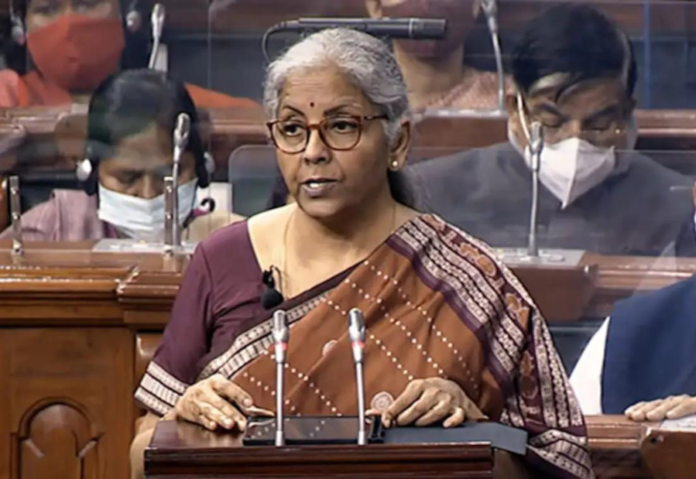It was the last full budget of the Narendra Modi government before it faces the 2024 Lok Sabha elections
Nirmala Sitharaman, the union finance minister on Wednesday presented her fifth budget in Parliament. It was the last full budget of the Narendra Modi government before it faces the 2024 Lok Sabha elections.
The finance minister announced several measures including a major relief to taxpayers by raising the rebate limit to Rs. 7 lakh under a new tax regime.
Decoding Nirmala Sitharaman’s budget address in numbers:
87 minutes: Nirmala Sitharaman delivered her shortest Budget speech so far. In 2019 her budget speech had lasted 140 minutes, which increased to 160 the year later. In 2021, the minister spoke for 100 minutes while her 2022 budget speech lasted 91 minutes.
Rs. 7 lakh: New income tax rebate limit for resident individuals whose income is up to Rs. 7 lakh.
Rs. 2 lakh crore: Finance minister announced that the Centre will be implementing from 1st January 2023, a scheme to supply free food grain to all Antyodaya and priority households for the next one year, under PM Garib Kalyan Anna Yojana (PMGKAY).
Rs. 2,200 crore: The Centre will launch an Atmanirbhar Clean Plant Program to boost availability of disease-free, quality planting material for high value horticultural crops.
Rs. 20 lakh crore: Increase in agriculture credit target with focus on animal husbandry, dairy and fisheries.
Rs. 6,000 crore: The government will launch a new sub-scheme of Pradhan Mantri Matsya Sampada Yojana with targeted investment of Rs. 6,000 crore to further enable activities of fishermen, fish vendors, and micro & small enterprises, improve value chain efficiencies, and expand the market.
157: The number of new nursing colleges will be established in co-location with the existing 157 medical colleges established since 2014.
38,800: The number of teachers and support staff who will be recruited for the 740 Eklavya Model Residential Schools, serving 3.5 lakh tribal students.
Rs. 5,300 crore: Central assistance will be given to Upper Bhadra Project to provide sustainable micro irrigation and filling up of surface tanks for drinking water in the drought-prone central region of Karnataka.
Rs. 79,000 crore: The outlay for PM Awas Yojana is being enhanced
by 66 per cent to over Rs. 79,000 crore.
Rs. 10 lakh crore: The Capital investment outlay is being increased steeply for the third year in a row by 33 per cent to Rs. 10 lakh crore, which would be 3.3 per cent of GDP. This will be almost three times the outlay in 2019-20.
Rs. 13.7 lakh crore: The effective capital expenditure of the Centre, which is 4.5 per cent of the GDP.
Rs. 2.40 lakh crore: Capital outlay provided for the Railways. This highest ever outlay is about 9 times the outlay made in 2013-14.
50 additional airports, heliports, water aerodromes and advance landing grounds will be revived for improving regional air connectivity.
Rs. 7,000 crore: For efficient administration of justice, Phase-3 of the
E-Courts project will be launched, the finance minister announced.
Rs. 35,000 crore: This Budget provides Rs. 35,000 crore for priority capital investments towards energy transition and net zero objectives, and energy security by Ministry of Petroleum & Natural Gas, Sitharaman announced.
500 new ‘waste to wealth’ plants under GOBARdhan (Galvanizing Organic Bio-Agro Resources Dhan) scheme will be established for promoting circular economy. These will include 200 compressed biogas (CBG) plants, including 75 plants in urban areas, and 300 community or cluster-based plants at total investment of Rs. 10,000 crore
10,000 Bio-Input Resource Centres will be set up to facilitate 1 crore farmers to adopt natural farming.
Also read: Technology leaders must keep themselves abreast of changes and trends
Do Follow: CIO News LinkedIn Account | CIO News Facebook | CIO News Youtube | CIO News Twitter
About us:
CIO News, a proprietary of Mercadeo, produces award-winning content and resources for IT leaders across any industry through print articles and recorded video interviews on topics in the technology sector such as Digital Transformation, Artificial Intelligence (AI), Machine Learning (ML), Cloud, Robotics, Cyber-security, Data, Analytics, SOC, SASE, among other technology topics






